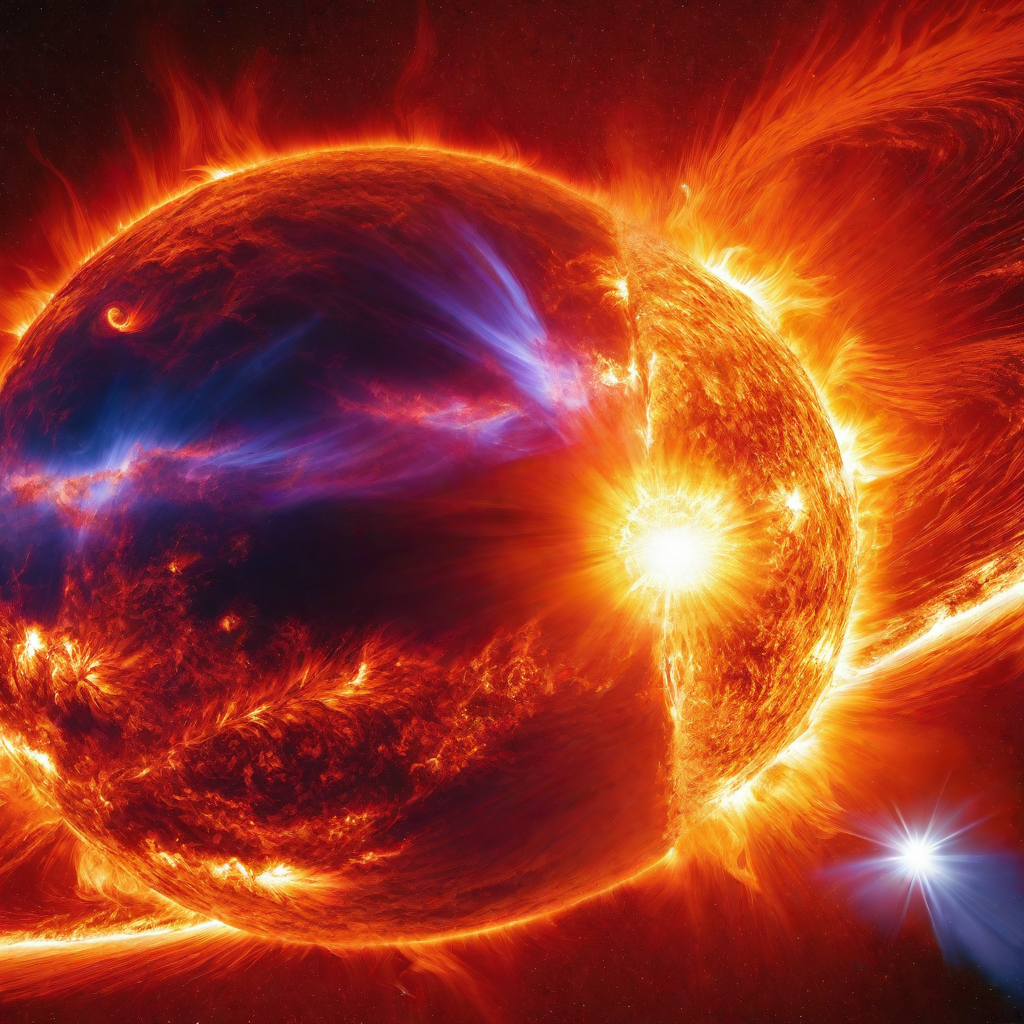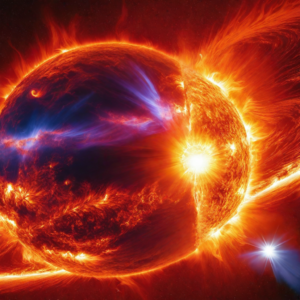
The Intriguing Science of Heliobiology: Unraveling the Sun’s Influence on Human Health
 Introduction
Introduction
The sun, a colossal powerhouse at the center of our solar system, is not just an emission of light and warmth; it is also a source of profound influence on Earth’s environment and, as emerging evidence suggests, on human health. Heliobiology, an interdisciplinary field at the intersection of astronomy and biology, delves into the correlations between solar activity and biological systems. This article explores the fascinating links between solar phenomena such as coronal mass ejections, coronal holes, and the solar cycle, with various aspects of human health, including the functioning of the pineal and pituitary glands, cardiac events, and psychological states.
The Solar Cycle and Its Earthly Impacts
The solar cycle, an approximately 11-year periodic fluctuation in the sun’s magnetic activity, manifests as variations in the number of sunspots, solar flares, and coronal mass ejections (CMEs). These solar activities can induce geomagnetic storms that interact with Earth’s magnetosphere, potentially affecting technological systems and biological entities alike.
The Magnetosphere: Earth’s Protective Shield
Earth’s magnetosphere, a region dominated by Earth’s magnetic field, acts as a protective barrier against solar winds and cosmic radiation. During periods of intense solar activity, this shield is bombarded with charged particles, which can lead to increased radiation exposure for high-altitude travelers and astronauts. However, the magnetosphere’s interaction with solar winds can also have subtler effects on those of us on the ground.
The Earth’s magnetosphere plays a crucial role in protecting life on our planet by acting as a shield against the harmful solar wind and cosmic rays. This magnetic barrier, generated by the dynamo action of the molten iron core, extends thousands of kilometers into space and is vital for maintaining the conditions necessary for life. The Earth’s magnetic field is instrumental in sustaining an environment that shields us from high levels of radiation which can be harmful. High altitude pilots and astronauts, for example, can experience higher levels of radiation during magnetic storms, but the hazard is attributed to the radiation, not the magnetic field.
The Schumann Resonance (SR), a set of spectrum peaks in the extremely low frequency portion of the Earth’s electromagnetic field spectrum, is thought to be closely linked with the health of the human body. Studies have suggested that there is a correlation between variations in the SR and various human health issues, such as altered blood pressure and melatonin levels, which in turn have been associated with increased rates of cancer, reproductive, cardiac, and neurological diseases. However, it is important to note that the evidence is not conclusive, and the exact mechanisms by which these effects might occur are not fully understood.
The idea that the Earth’s magnetic field is directly linked to human health is a topic of ongoing research. Some studies have proposed that humans may have a sensory system that responds to magnetic fields, which could potentially influence brain waves and behavior. Yet, the scientific community has not reached a consensus on this matter, and more research is needed to understand the potential connections between the Earth’s magnetic field, the Schumann Resonance, and human health. It is a complex interplay of factors that requires careful scientific investigation to unravel the intricate ways in which our planet’s magnetic properties might interact with biological systems.
Pineal and Pituitary Glands: Solar Sensitivity?
The pineal gland, known for regulating sleep patterns through melatonin secretion, may exhibit increased melatonin production during solar storms, suggesting a potential impact on sleep quality and circadian rhythms. Similarly, the pituitary gland, often dubbed the “master gland” due to its role in controlling various hormonal processes, follows a circadian rhythm that could be influenced by geomagnetic activity.
Cryptochrome is a class of flavoproteins that are sensitive to blue light and are found in plants and animals. These proteins are involved in the regulation of circadian rhythms, which are the physical, mental, and behavioral changes that follow a roughly 24-hour cycle, responding primarily to light and darkness in an organism’s environment. In mammals, the pineal gland, an endocrine gland located in the brain, is influenced by light exposure and is responsible for the production of melatonin, a hormone that helps regulate sleep-wake cycles. Solar flares, which are sudden flashes of increased brightness on the sun, can cause disturbances in the Earth’s magnetic field. There is ongoing research into how these geomagnetic fluctuations might impact cryptochrome and its role in circadian regulation, potentially affecting the production of hormones like melatonin in the pineal gland.
Cardiac Events: A Solar Connection?
Research has indicated a correlation between solar and geomagnetic activity with cardiovascular health. Studies have observed an increase in the rate of myocardial infarction and related deaths during geomagnetic storms, hinting at a possible link between the heart’s electrical system and solar-induced geomagnetic disturbances.
Psychological States: Mood Swings and Solar Flares
The psychological impact of solar activity is an area of growing interest. Anecdotal evidence and some scientific studies suggest that solar storms may influence mood and cognitive function, potentially exacerbating conditions like depression and anxiety. While the mechanisms behind these effects are not fully understood, they point to a complex interplay between environmental electromagnetic fields and human physiology.
Conclusion
The study of heliobiology is shedding light on the intricate ways in which solar activity can ripple through the cosmos and affect life on Earth. From the depths of our endocrine system to the rhythms of our hearts and the fluctuations of our moods, the sun’s influence extends far beyond its visible presence in the sky. As research continues to unravel these connections, we gain a deeper appreciation for the sun’s role in the tapestry of life and a reminder of our place within the broader universe.
References
: “The Effects of Solar Activity and Geomagnetic Disturbance on Human Health”
: “Does the Earth’s magnetic field affect human health?”
: “Solar storms and pineal gland – riding the power wave”
: “Overview of the Pituitary Gland – MSD Manual”
: “Geomagnetic disturbances driven by solar activity enhance total and cardiovascular mortality risk”
: “The association between phenomena on the Sun, geomagnetic activity, and cardiovascular health”
: “Geomagnetic Storms and Cognitive Function: Linking Solar Activity to Brain Health”
: “How Solar Storms Affect Human Consciousness and Wellbeing”
